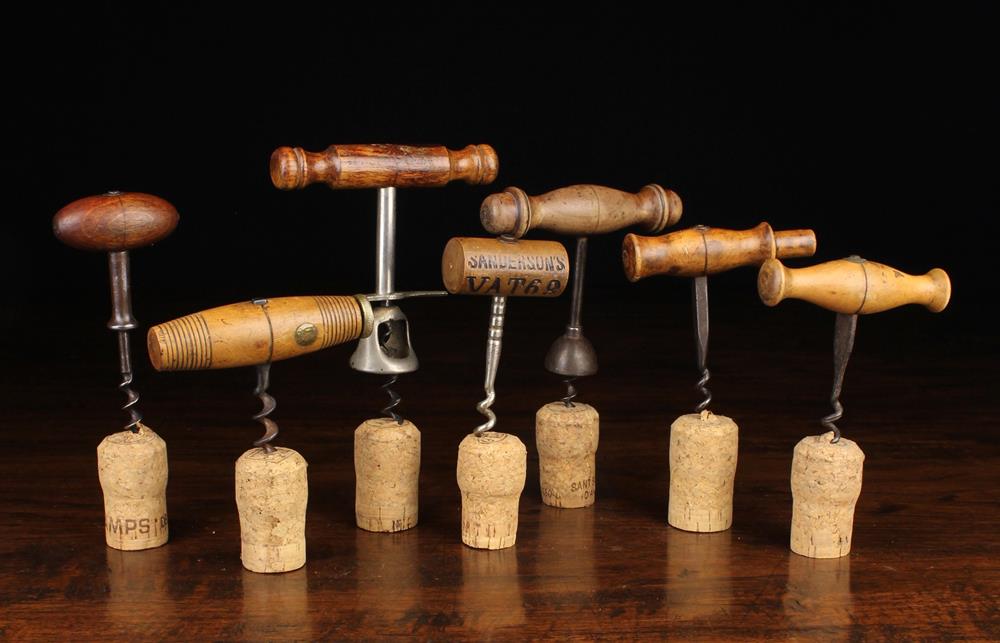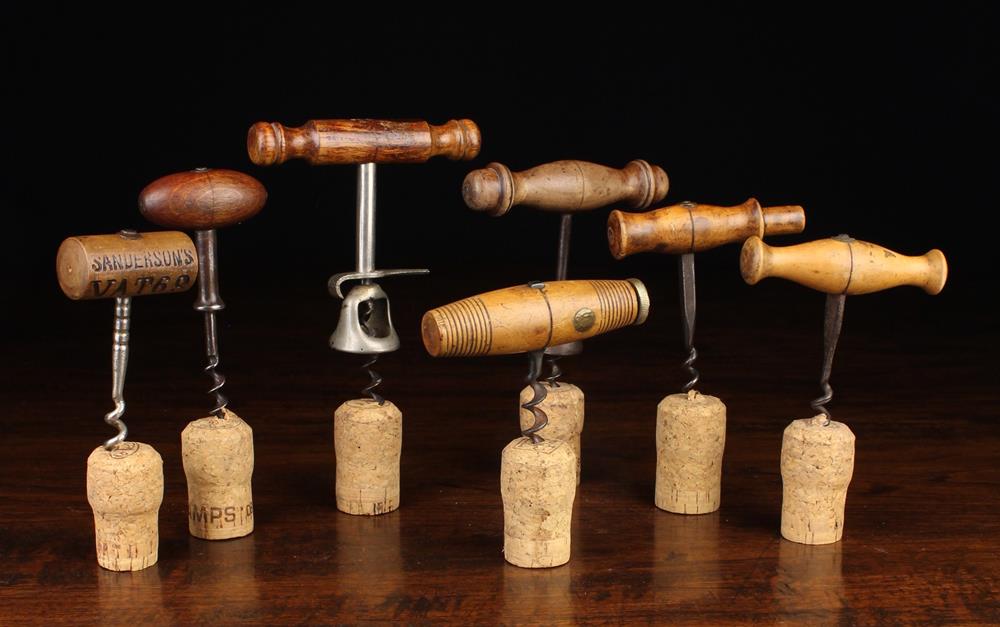Description
Seven Late 19th/Early 20th Century Corkscrews: A partial puller by Williamson U.S.A 1893 patent with turned wooden handle, a round shank stamped ‘WILLIAMSON’S’ above a cap lifter and knife, bell shaped frame and centre cut helix, 6” (15 cm) in length. The second having turned beechwood pestle handle, a steel shank with domed crown above centre cut helix. The third with a turned boxwood handle with codd knocker to one end, square shank leading into a simple wire helix, 4¼” (11 cm) in length. The fourth having a cork-shaped boxwood handle branded ‘SANDERSON’S VAT 69’. The fifth a straight-pull corkscrew with changeable helix mounted on a ring turned handle with brass screw-thread cap to one end stamped ‘EDWD. PRESTON & SONS EP’. The sixth with boxwood pestle handle and a fluted wire helix. The last being Swedish, circa 1920 with a wooden ovoid knop handle and steel shank running into the centre cut helix.


